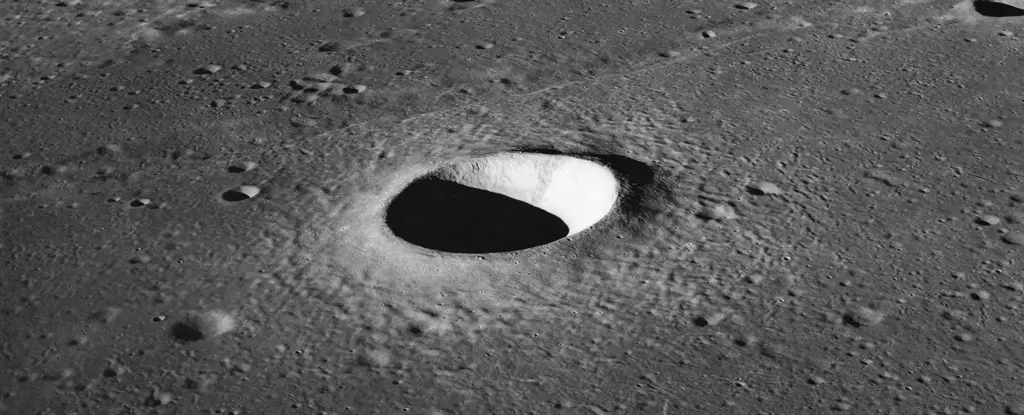The Moon, our celestial neighbor, serves not just as a luminous nightlight but as a time capsule, chronicling a tumultuous and eventful chapter in the history of our Solar System. Its surface is blanketed with impact craters of all sizes, from tiny indentations to vast basins that stretch over a thousand kilometers wide. These geological features are not merely aesthetic; they tell the story of a violent epoch known as the Late Heavy Bombardment, which occurred roughly 4 billion years ago. During this critical time, the inner Solar System faced relentless asteroid and comet impacts, sculpting the lunar landscape into what we see today.
In stark contrast to Earth—where relentless weathering, erosion, and tectonic movements constantly remodel the surface—the Moon stands quiet and static. Lacking a breathable atmosphere and significant geological dynamism, the Moon has preserved these impact craters for eons. This immovable characteristic allows us a unique view into our Solar System’s history, offering invaluable insight into the formative processes that shaped Earth and its neighbors.
A Scientific Expedition into the Moon’s Ejecta
One fascinating aspect of lunar impacts is their ability to eject material into space, some of which eventually finds its way to Earth. Imagine a cosmic relay race where debris from the Moon becomes a participant in Earth’s geological narrative. A recent study led by researcher Jose Daniel Castro-Cisneros has sought to illuminate this process with unprecedented clarity. By employing advanced computer modeling, the research team took a pioneering approach, utilizing the REBOUND simulation package to offer a more robust analysis of how lunar debris travels to our planet.
In previous research, limits in computational technology constrained the extent to which scientists could accurately simulate the ejection dynamics. However, Castro-Cisneros and his team pushed these boundaries. They examined a wider range of initial conditions and extended timeframes, enabling a more comprehensive understanding of how much lunar material actually reaches Earth over hundreds of thousands of years.
The Distribution and Dynamics of Lunar Material
The results of this meticulous research revealed that approximately 22.6% of lunar ejecta eventually collides with Earth within a span of 100,000 years, a remarkable statistic emphasizing the active exchange between the two bodies. Most importantly, the data illuminated a fascinating pattern: half of the lunar materials that reach Earth do so within the first 10,000 years post-impact, indicating that these collisions are not equally distributed over time.
Moreover, the study unveiled critical insights regarding the impact dynamics. It was found that lunar materials that are ejected from the Moon’s trailing side are significantly more likely to collide with Earth than those ejected from the leading side. This information is vital for those aiming to understand the mechanics of orbital mechanics and celestial mechanics, revealing a complex dance of gravitational forces at play.
Regional Impact Preferences and Their Role
An intriguing facet of the study highlights the geographical distribution of lunar impacts on Earth. The findings suggest that these impacts predominantly occur near the equator, with an observable 24% decrease in collision frequency at the poles. Such a preference underscores the need to rethink how we consider impact distribution in planetary science. The research also found that impacts are symmetrically distributed in both morning and evening hours, peaking at approximately 6 AM and 6 PM.
Understanding the ‘who, what, and where’ of these lunar impacts helps provide context for potential geological ramifications on Earth. Given that objects like Kamo’oalewa, a near-Earth object posited to be a remnant of the Moon, could play a substantial role in Earth’s own geological history, this research lays an essential groundwork for future explorations.
Exploring the Deeper Implications
This research undeniably advances our comprehension of the interplay between the Moon and Earth, casting a spotlight on the shared impact history that binds these celestial bodies. The study propels forward the lunar origin hypothesis regarding certain near-Earth objects and fundamentally alters our understanding of how cosmic events shape planetary evolution. Ultimately, the discoveries related to impact distribution and dynamics offer an exciting avenue for future inquiries into the mechanics of our Solar System, reaffirming the necessity for ongoing exploration of both the Moon and our planet. As we continue to dig deeper, the Moon remains not just a barren rock in the night sky, but a beacon of discovery and understanding, urging us to explore further into the mysteries of the cosmos.

